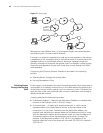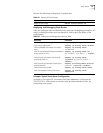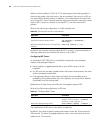
RIP 89
RIP Routing Information Protocol (RIP) is a simple, dynamic routing protocol, that is
Distance-Vector (D-V) algorithm-based. It uses hop counts to measure the distance
to the destination host, which is called routing cost. In RIP, the hop count from a
router to its directly connected network is 0. The hop count to a network which
can be reached through another router is 1, and so on. To restrict the time to
converge, RIP prescribes that the cost value is an integer that ranges from 0 to 15.
The hop count equal to or exceeding 16 is defined as infinite, or the destination
network or host is unreachable.
RIP exchanges routing information using UDP packets. RIP sends a routing refresh
message every 30 seconds. If no routing refresh message is received from one
network neighbor in 180 seconds, RIP tags all routes of the network neighbor as
unreachable. If no routing refresh message is received from one network neighbor
in 300 seconds, RIP removes the routes of the network neighbor from the routing
table. RIP v2 has the MD5 cipher authentication function while RIP v1 does not.
To improve performance and avoid routing loops, RIP supports split horizon,
poison reverse, and allows for importing routes discovered by other routing
protocols.
Each router that is running RIP manages a route database, which contains routing
entries to all the reachable destinations in the network. These routing entries
contain the following information:
■ Destination address — The IP address of a host or network.
■ Next hop address — The address of the next router that an IP packet will pass
through to reach the destination.
■ Output interface — The interface through which the IP packet should be
forwarded.
■ Cost — The cost for the router to reach the destination, which should be an
integer in the range of 0 to 15.
■ Timer — The length of time from the last time that the routing entry was
modified until now. The timer is reset to 0 whenever a routing entry is
modified.
■ Route tag — The indication whether the route is generated by an interior
routing protocol, or by an exterior routing protocol.
The whole process of RIP startup and operation can be described as follows:
1 If RIP is enabled on a router for the first time, the router broadcasts a request
packet to adjacent routers. When they receive the request packet, adjacent routers
(on which RIP is also enabled) respond to the request by returning response
packets containing information about their local routing tables.
2 After receiving the response packets, the router that sent the request modifies its
own routing table.
3 RIP broadcasts its routing table to adjacent routers every 30 seconds. The adjacent
routers maintain their own routing tables after receiving the packets and elect an
optimal route, then advertise the modification information to their adjacent
network to make the updated route globally available. Furthermore, RIP uses
timeout mechanism to handle timed-out routes to ensure the timeliness and


















